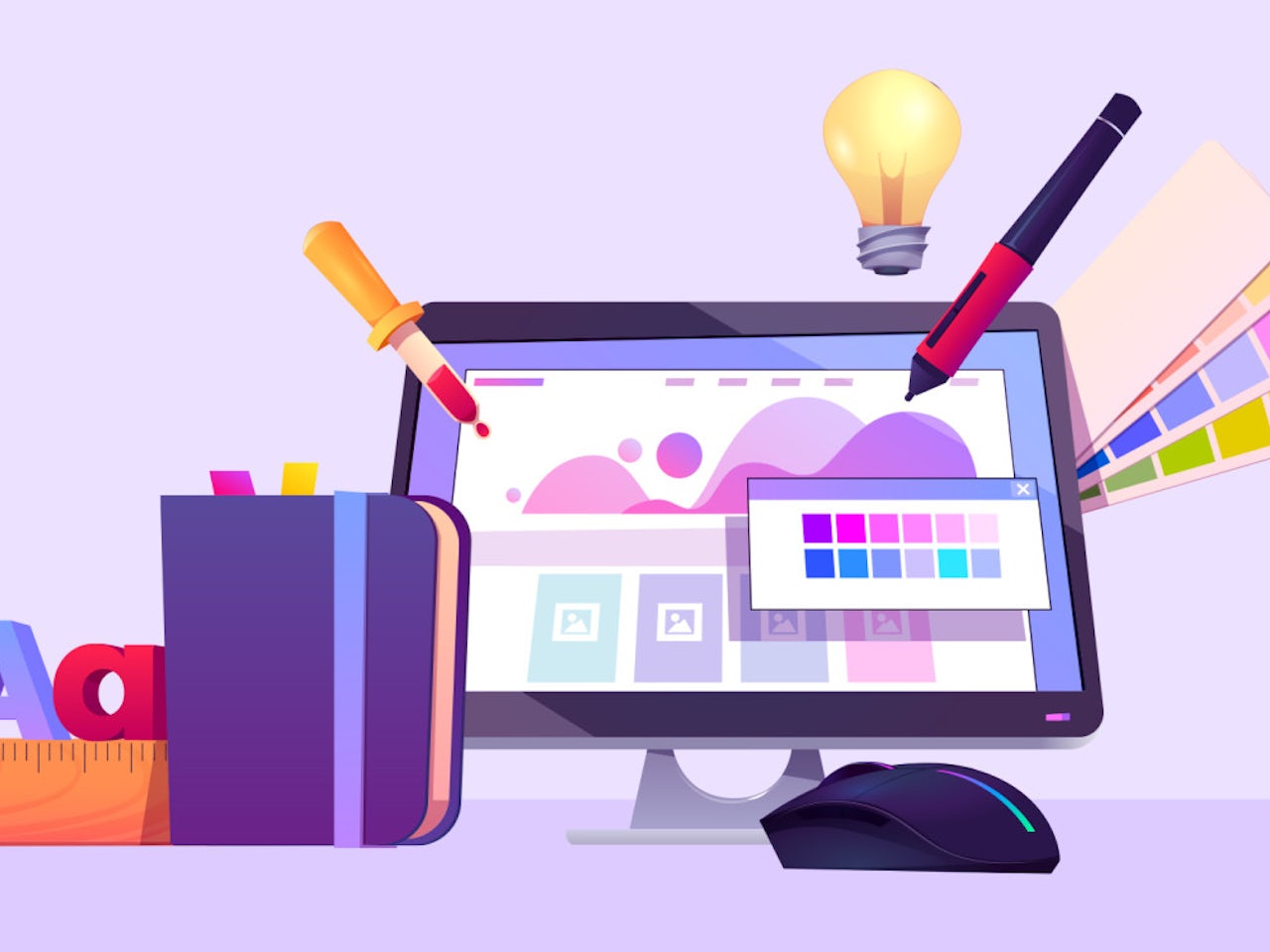The Duty of Responsive Website Design in Today's Mobile Market
The Duty of Responsive Website Design in Today's Mobile Market
Blog Article
Maximize User Experience With Ingenious Website Design Solutions
In today's digital landscape, making best use of individual experience through cutting-edge web site design services is essential for organizations seeking to involve their target market efficiently. By welcoming user-centric layout principles, companies can produce user interfaces that not just meet individual requirements however additionally boost general complete satisfaction. Key factors such as receptive layouts, intuitive navigating, and efficient aesthetic pecking order play a crucial role in this process. Nonetheless, the combination of interactive elements can additionally elevate the user journey, triggering a reevaluation of standard layout methods. What techniques might emerge when we consider the progressing assumptions of customers?
Comprehending User-Centric Design

To implement user-centric layout effectively, it is vital to conduct detailed research study, including user meetings, surveys, and functionality screening. These study methods offer beneficial information that notifies design decisions, guaranteeing that the end product lines up with individual assumptions. Additionally, creating individual identities can aid developers picture and empathize with the end-users, leading the design procedure towards more relevant services.
Furthermore, repetitive design is a vital part of user-centric approaches. By continuously screening and refining styles based on customer comments, developers can recognize pain factors and areas of improvement, resulting in a much more polished end product. Inevitably, user-centric design is not just a stage in the development process but a constant dedication to focusing on customer demands, causing more interesting and reliable digital experiences.
Importance of Responsive Layouts
As electronic communications significantly take place across a variety of tools, the significance of receptive layouts can not be overemphasized. A responsive format makes certain that a web site adapts perfectly to different display sizes, from desktop computer monitors to mobile phones. This flexibility is essential in today's multi-device landscape, where users expect a consistent and appealing experience no matter how they access web content.
The key advantage of receptive style is improved user contentment. When a web site is maximized for all gadgets, it reduces the requirement for zooming, scrolling, or straight navigating, which can frustrate individuals and lead to greater bounce prices. Furthermore, internet search engine like Google prioritize mobile-friendly sites in their ranking algorithms, making responsive layouts essential for effective SEO methods.
Additionally, responsive formats promote less complicated upkeep and updates. As opposed to handling separate versions of a website for different devices, a solitary, fluid design can be changed, conserving time and sources. This holistic strategy not just enhances performance but likewise fosters brand name coherence across systems. Inevitably, buying receptive formats is not just a pattern; it is a basic principle of modern-day website design that dramatically boosts individual experience and involvement.
Enhancing Navigation and Accessibility
Effective navigation and ease of access are pivotal parts of a properly designed website, significantly influencing individual interaction and contentment. An easy to use navigating framework allows visitors to locate information quickly and with ease, lowering stress and increasing the likelihood of repeat sees. Applying check that clear, detailed tags for navigation links, along with a logical power structure, can guide users effortlessly through the internet site.
Availability is just as crucial, guaranteeing that all individuals, despite their capacities or impairments, can engage with the website effectively. This can be attained with the use of proper shade contrasts, text sizes, and alt message for photos, which together enhance the experience for visually impaired customers. Including keyboard navigating and screen visitor compatibility broadens gain access to for individuals with varied demands.
Normal functionality testing can supply beneficial understandings into navigating effectiveness and accessibility concerns. By gathering responses from real users, designers can recognize pain points and make informed adjustments. Eventually, prioritizing navigating and accessibility not just cultivates inclusivity however likewise cultivates a positive user experience, reinforcing the brand name's commitment to high quality and individual treatment in a progressively electronic landscape.
Making Use Of Aesthetic Pecking Order Effectively
Visual hierarchy works as a leading framework in website layout, routing users' attention to one of the most vital elements on a page. By purposefully organizing aesthetic elements such as typography, shade, and spacing, developers can create a clear path for customers to adhere to. This framework not only improves customer experience however also improves content understanding.
One reliable way to develop aesthetic pecking order is with making use of size and scale. Larger components normally bring in even more interest, making headings and vital visuals popular. Matching this strategy with contrasting shades can better separate key web content from secondary information, making certain that vital information stands apart.
Furthermore, the setup of components plays a crucial role in assisting user communication. Employing a grid design can create a natural flow, while whitespace assists to separate material and minimize cognitive tons - Website Design. This deliberate spacing enables individuals to refine details more conveniently, causing boosted involvement
Finally, making use of regular design patterns aids enhance aesthetic power structure, giving individuals with familiar hints as they navigate the website. By focusing on these concepts, designers can properly make the most of user experience, making sure that visitors can easily locate the information they look for.
Incorporating Interactive Aspects
The incorporation of interactive aspects into website layout can considerably boost user involvement and general experience. Interactive functions such as surveys, sliders, and quizzes not only mesmerize customers yet likewise advertise active participation, making the searching experience extra remarkable. By motivating customers to communicate, internet sites can efficiently preserve focus and minimize bounce prices.
Furthermore, incorporating dynamic material like computer animations and hover results adds an enticing website here layer of interactivity. These elements can assist customers intuitively with the website, highlighting vital information and contacts us to activity. Animated buttons can draw interest and enhance click-through prices.
Additionally, personalization with interactive tools such as chatbots or recommendation engines enables web sites to provide to individual choices, promoting a sense of link. This customized method not just boosts individual complete satisfaction however also urges repeat visits.
Integrating analytics devices to track communications offers valuable insights right into customer habits, making it possible for constant enhancement of the interactive aspects. Inevitably, a properly designed interactive experience transforms a passive browsing session into an engaging trip, bring about raised customer check over here contentment and loyalty. Incorporating interactive elements is essential for optimizing customer experience in contemporary site design.
Verdict

In today's electronic landscape, making best use of individual experience through ingenious web site layout services is critical for companies seeking to engage their audience effectively. Ultimately, prioritizing navigation and ease of access not only promotes inclusivity however likewise grows a positive user experience, strengthening the brand's dedication to quality and user care in a progressively digital landscape.

In verdict, optimizing individual experience through ingenious website layout services necessitates a dedication to user-centric principles. Website Design.
Report this page